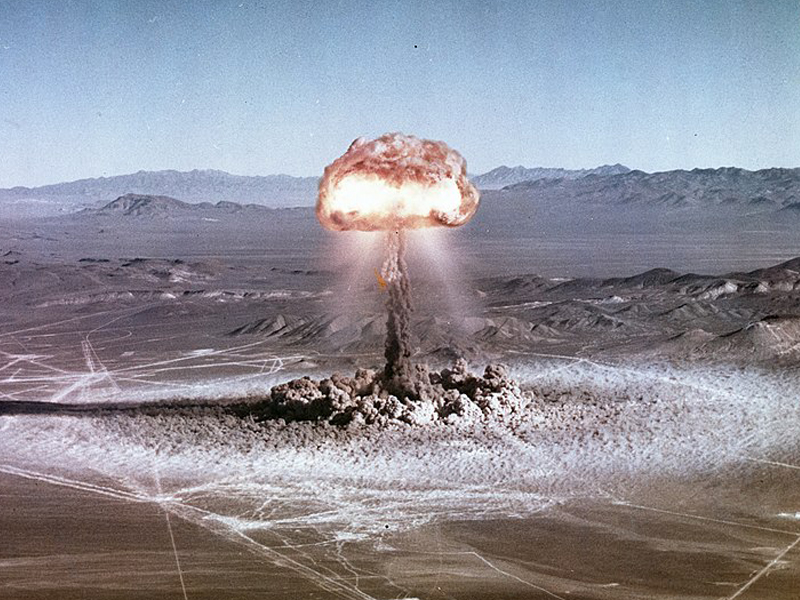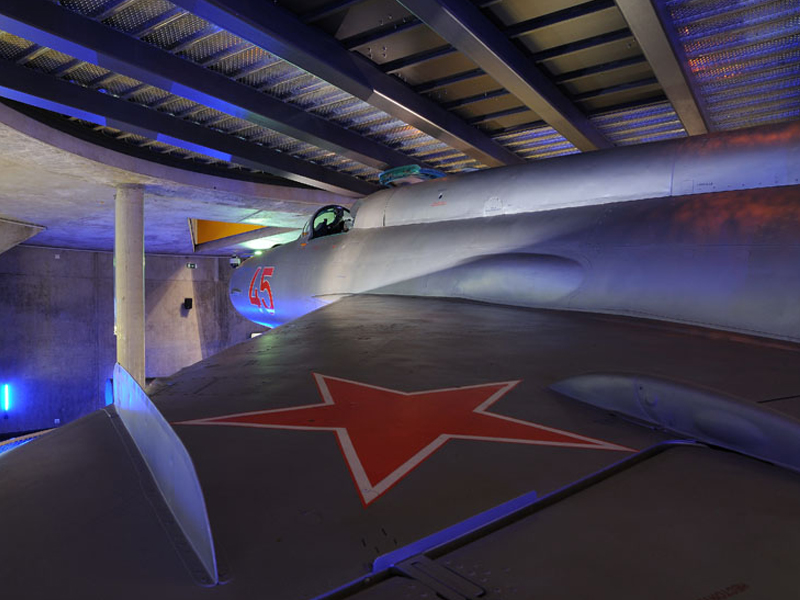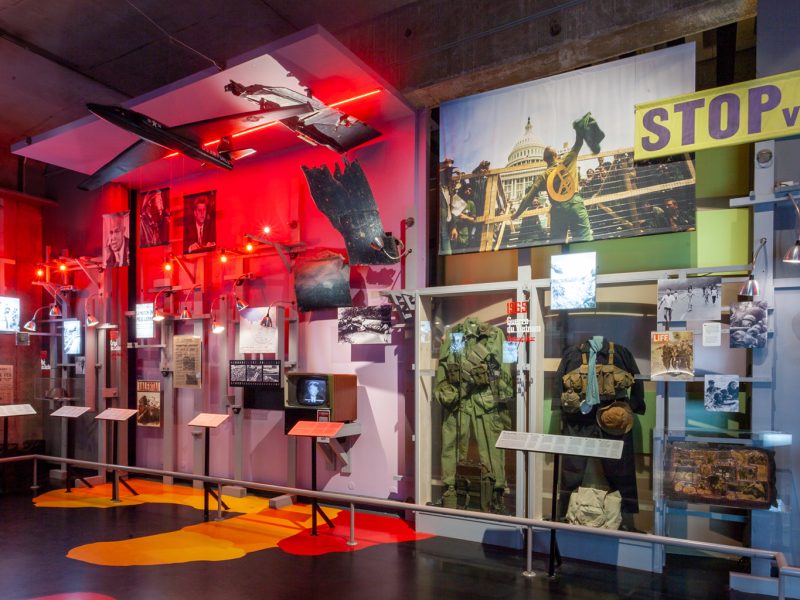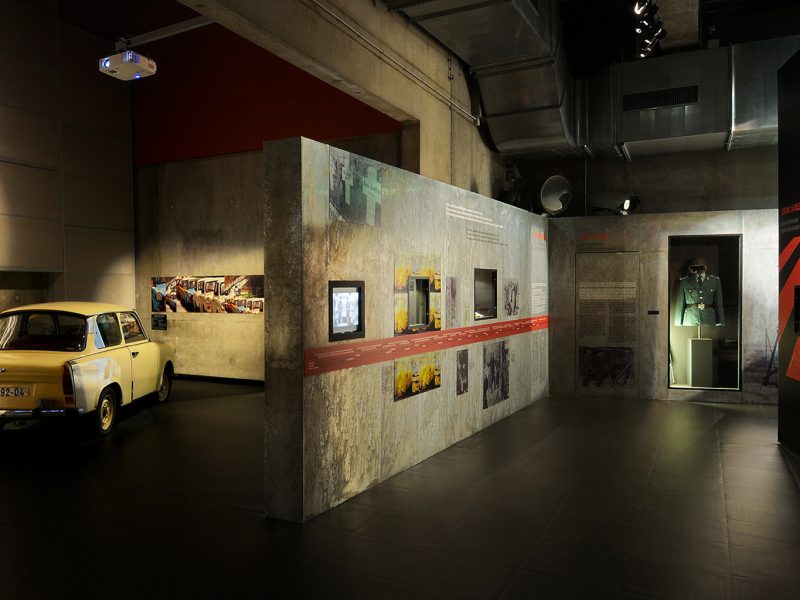The circular cinema screen reminds visitors that the principle of nuclear deterrence was above all rooted in a reciprocal terror that had taken hold since 1945.
The films on display here show how civilians and soldiers on both sides prepared themselves for a nuclear attack.
Educational films shown in schools, clips of maneuvers in case of a nuclear attack, propaganda films, etc. were without exception intensely frightening. Fear of the nuclear bomb had now become a deep-rooted psychosis and an incredible political instrument.



